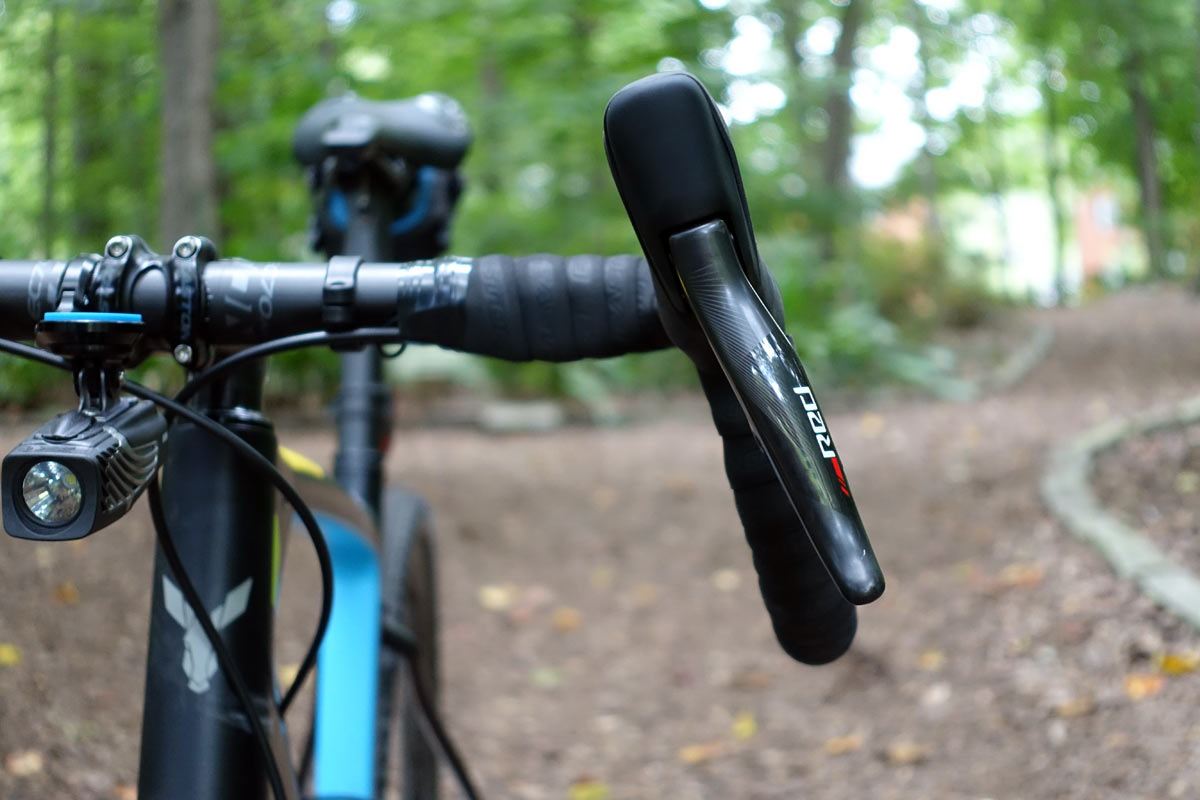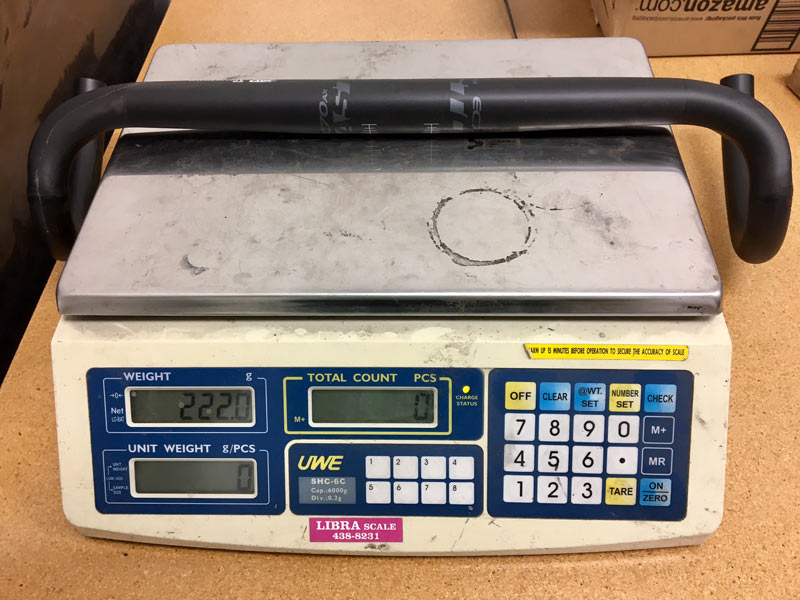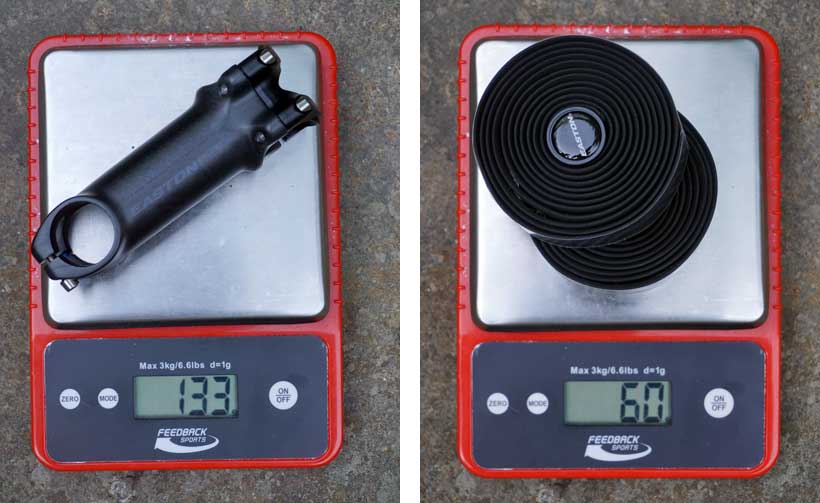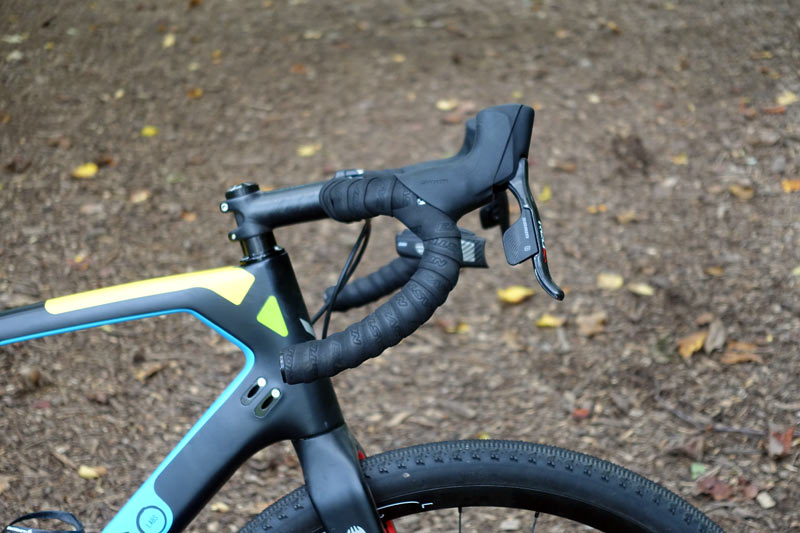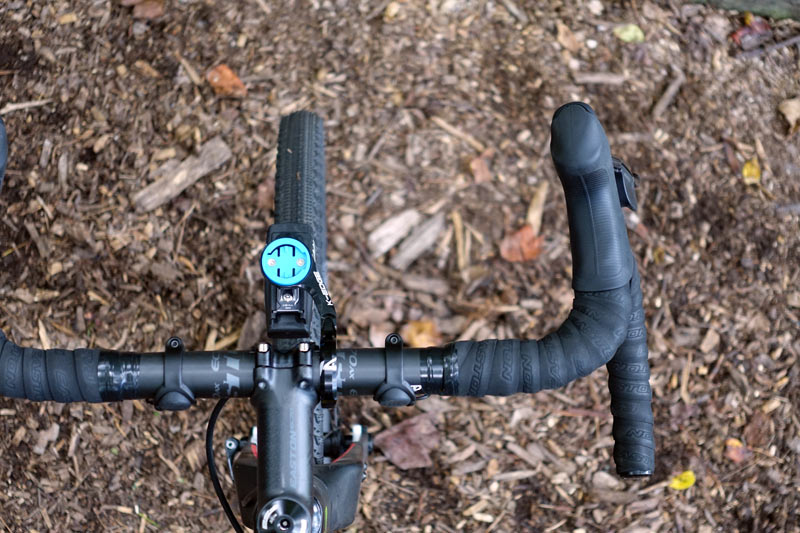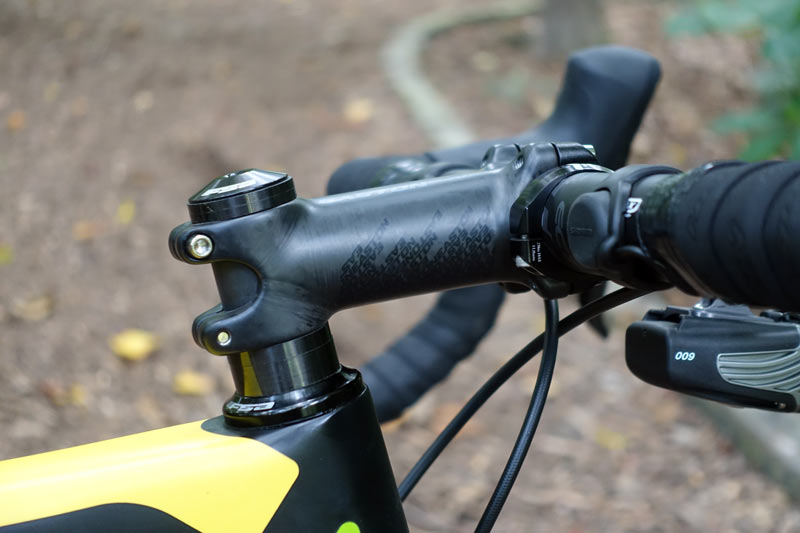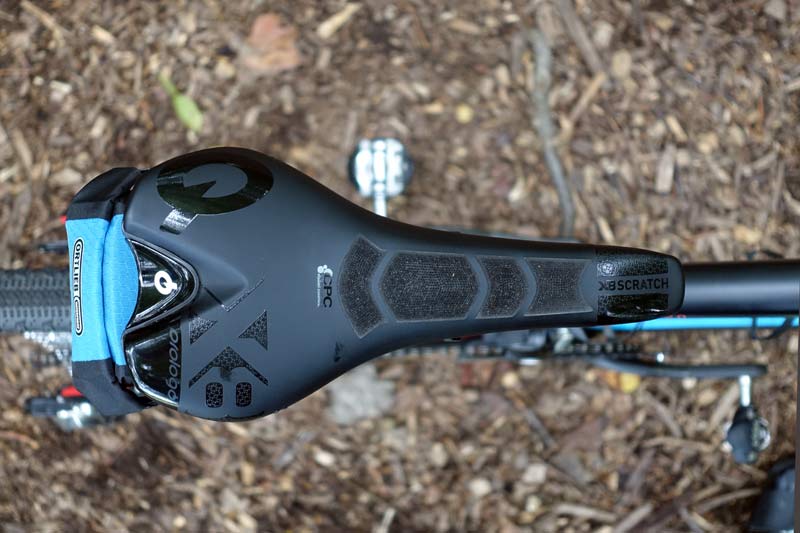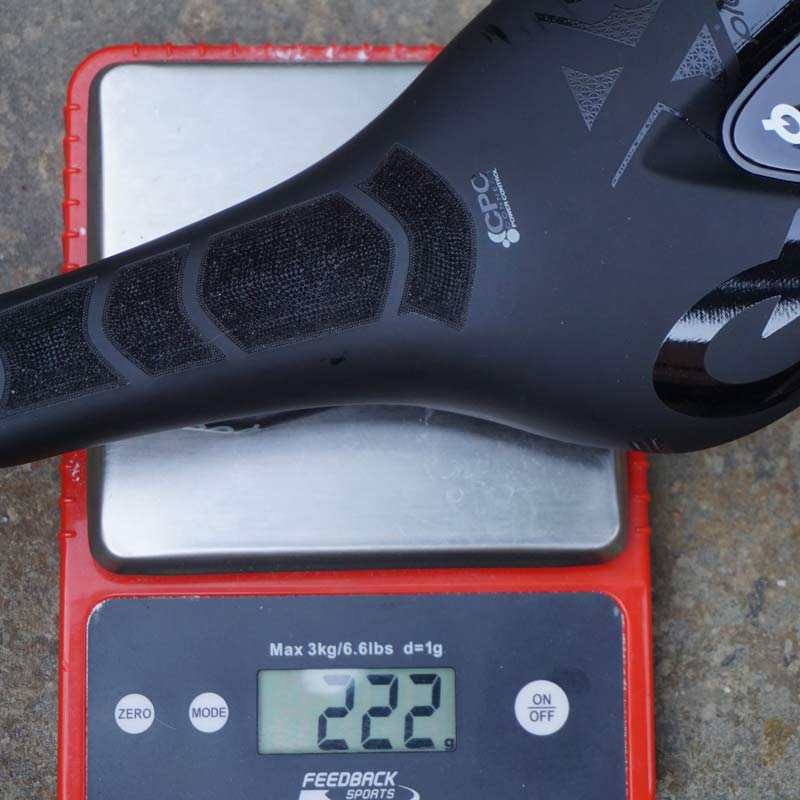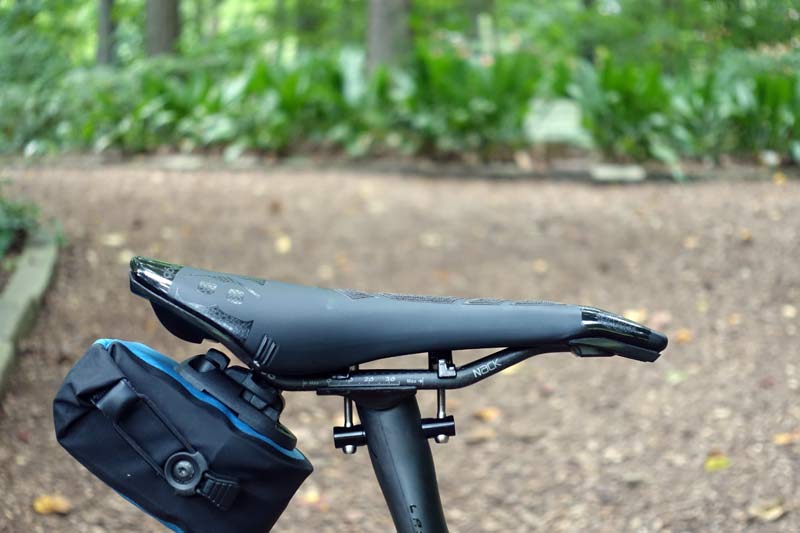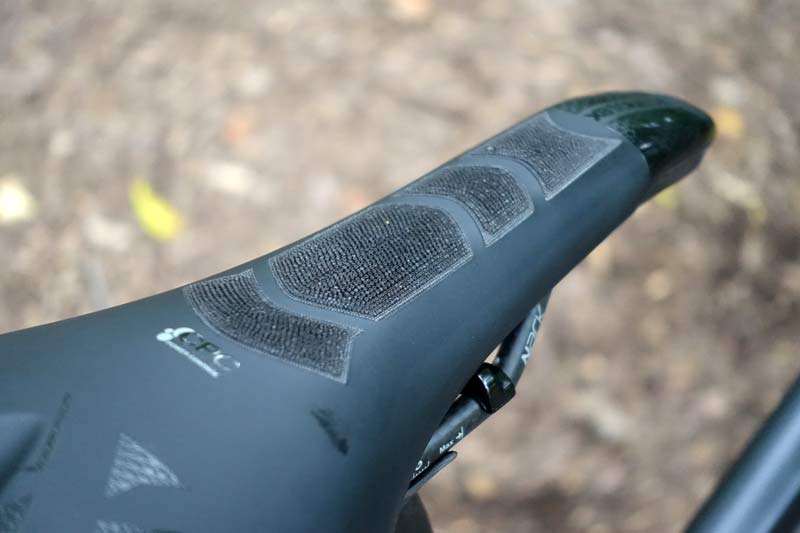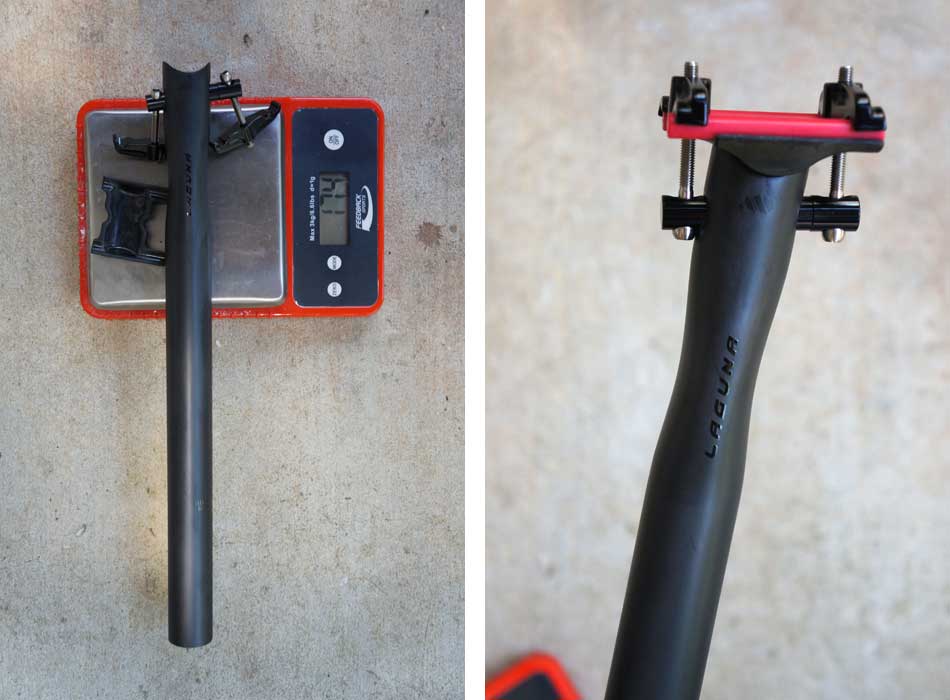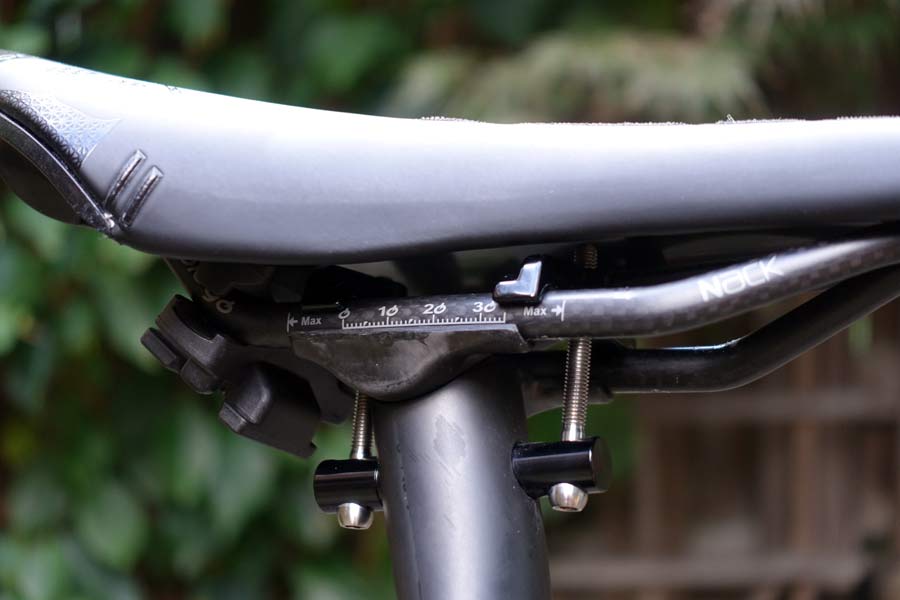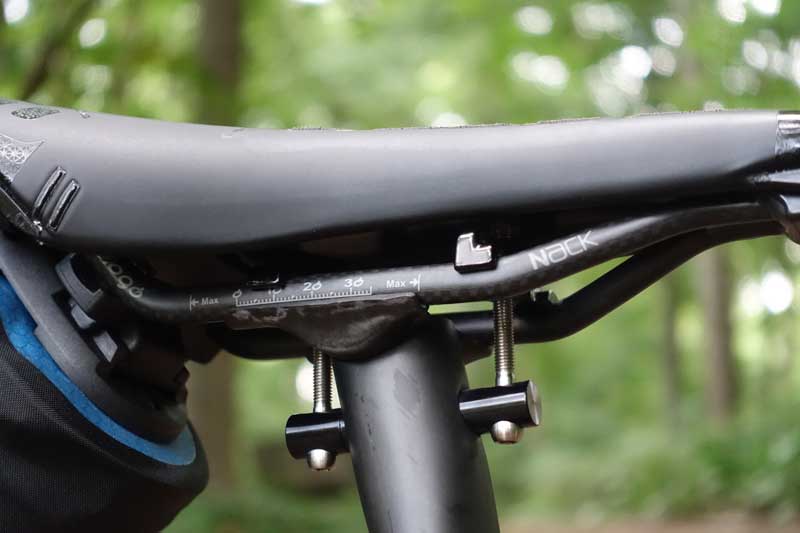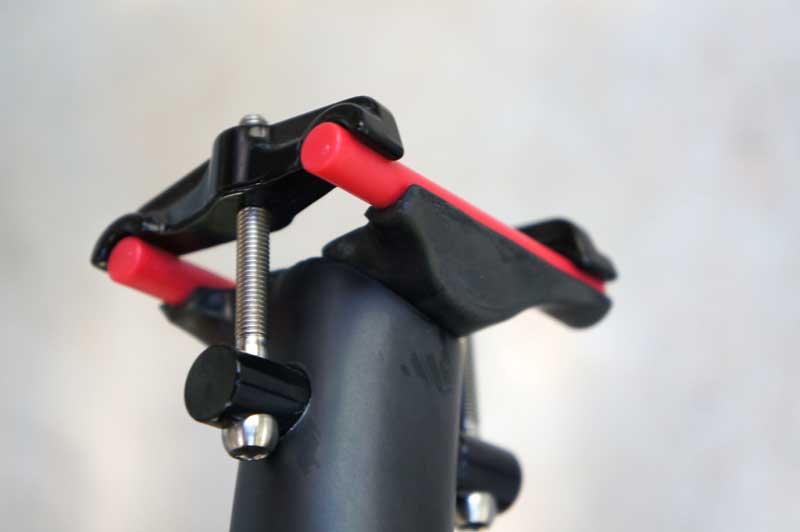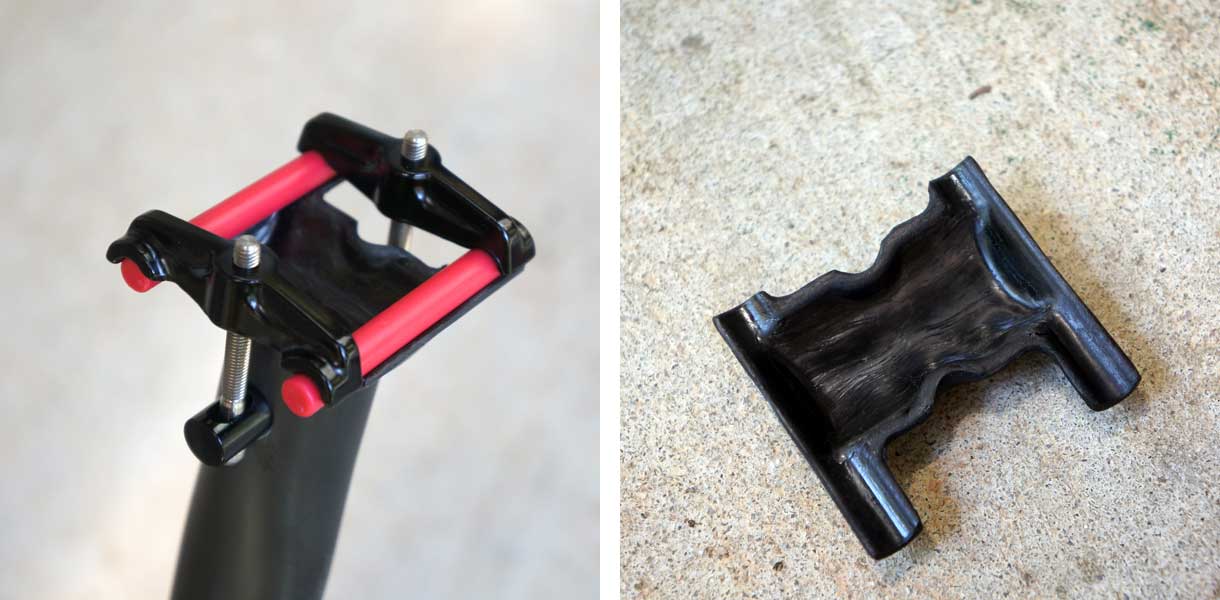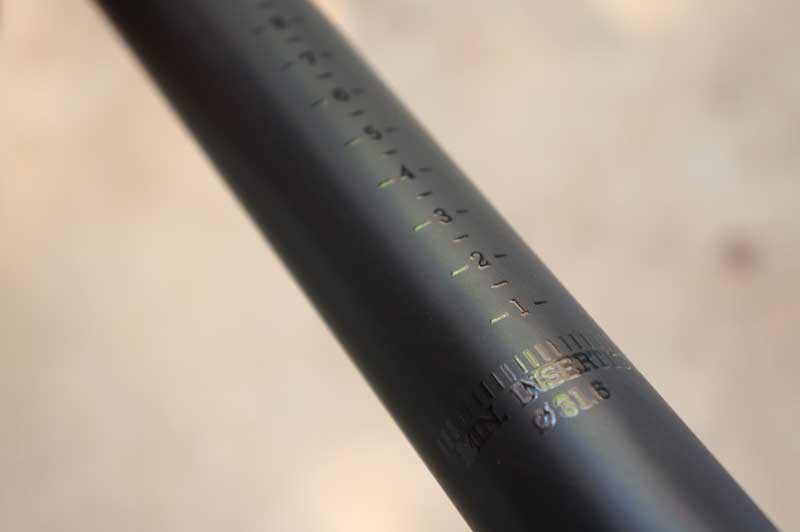We continue the World’s Funnest Bike project for 2017 with the cockpit, which includes the Easton EC70 AX flared drop handlebars and EC70 SL carbon stem, Laguna Cycles’ ultralight carbon seatpost, and a Prologo Scratch X8 mountain bike saddle. Last week, we kicked things off introducing the Rodeo Labs Trail Donkey 2.0 frameset and the wheels and tires from HED and Terrene if you need to catch up.
The parts here were chosen because, at face value, they appear to offer the right mix of light weight and comfort. Mostly, they’ve lived up to this promise, with one limitation that may or may not be resolved…
EASTON EC70AX HANDLEBAR & STEM
During weigh in, I somehow missed the handlebar, so our friends at Easton threw a 44cm (same width as tested) on their scale, which comes in at 222g. The measurements are to the center of the hoods, and then the drops flare 16º to add 6.8cm to the final width. Drop is 120mm, reach is 80mm.
Back on our scales, the 100mm EC70 SL stem comes in at 133g, and Easton’s handlebar tape is 60g for two full rolls with end plugs. During installation, I only nipped the ends into a diagonal for a clean finish, so basically used the full length. The stem has carbon-wrapped Taperwall alloy body that maximizes stiffness, and ti hardware to save weight…ours came in 7g under claimed weight.
Easton’s AX series is purpose built for gravel and adventure, and these bars fit the bill the shallow, flared drop feels perfect for those rare stretches when I want to get low. Not too low, because I still want to be mostly heads up to look for rough patches, but low enough to make a difference. The transition to the bends offers a perfectly flat transition to the shifter’s hoods, which I like.
Both the carbon and alloy AX bars are round, but they carry the 31.8mm center clamp section’s diameter all the way out, so there’s a nice fat perch for your hands. I wrapped the tape a little close to provide more padding.
The stem’s backside is cut out, which makes it look like the bolts protrude farther than normal, but they don’t. And their housing is rounded on all faces, so if your knees do make contact, it’s unlikely to scratch you. I’ve been riding the EC70 AX bar on the new Niner RLT RDO for a while before this bike was built, and so far I’m really digging it. It’s comfortably forgiving and has great ergonomics. And the pair looks good thanks to muted graphics…something more brands could stand to incorporate.
PROLOGO SCRATCH X8 MOUNTAIN BIKE SADDLE
I brought the Prologo Scratch X8 saddle home from our factory tour with the intentions of putting it on my XC bike. The carbon-railed model is a mountain bike saddle after all, but I reserved it for this build instead for two reasons. First, it’s light…
At 222g, it’s not winning weight weenie awards, but for a full featured, fully padded saddle with their CPC anti-vibration/anti-slip treatment, it’s light enough. This particular model and size was chosen after doing their MyOwn fit system, which measures sit bone width, hip and lower back flexibility and more, then computers your ideal ranges. From there, you pick the correct saddle type (flat, semi-round, round) and width. The Scratch is their “round” saddle family, in which they have various versions, rail materials, etc. The Scratch X8 CPC Nack version is what’s tested here.
There’s a bit of a kick at the tail, just a little something to push against on the climbs, but low enough that it’s easy to get off the back on the descents. So far, it’s been one of those saddles I can just hop on and feel instantly comfortable…as long as it stays put. More on that below, I don’t think it’s the saddle’s fault.
Their CPC treatment is an F1-inspired material design that uses small circles and nubs of a rubber-like substance. The idea is to reduce vibration and provide a non-slip surface. For mountain bike saddles, it’s mainly found on the nose to keep you planted while climbing. I can’t honestly say I notice the vibration reduction, but I don’t feel much vibration either, even with the nubbly gravel tires mounted here. But the non-slip is nice.
LAGUNA CYCLES CARBON FIBER SEATPOST
Laguna Bicycles has sent us some really, really lightweight carbon bottle cages in the past that work wonderfully. So I had high hopes for their first seatpost, an ultralight carbon post with titanium hardware. But so far, I’m not convinced…even after adjusting for installation errors.
Here’s how it’s supposed to be installed. Top clamps with tall sections facing out, and the cradle’s longer end facing forward.
Without any installation instructions online or off, here’s how I installed it at first. In this configuration, the saddle never felt fully secure even though it was tight. And within 20 minutes of riding, the saddle would slide back as far as it could, well outside of the recommended clamp zone. The front clamp ended up resting against the bend in the rail, and the whole thing ended up loose enough to easily knock it back into place, only to have it quickly slide back again. And there was rotational play.
I called James at Laguna to see what was up, and provided proper mounting instructions. He also says they haven’t had any similar complaints from other customers nor have they experienced this themselves. So, a new post is on the way, which we’ll swap in and see if the problem persists. Even when mounted as instructed and torqued properly (which is scary, because there are noises I don’t like), the saddle slips back within 20-30 minutes of riding on the road.
Before you say “oh, well that post obviously isn’t designed for carbon rails”, yes, they say it is. Round and oval rails, carbon or metal. James says braided rails (which is what’s on the Prolog saddle) are best, and that smooth UD rails should use carbon friction paste.
Tech specs include a carbon shaft with flex shaping near the top, a full carbon cradle, alloy top clamps and titanium bolts. Our 31.6 post came in at 174g (1g lighter than claimed), and they offer a 27.2 post with a claimed weight of 155g. Retail is $149.99.
The features are solid, and the weight is insane. The flex zone works -I can watch the nose of the saddle oscillate with each pedal stroke- to take the edge off the bumps when seated. I’m really hoping the replacement post proves this one was simply defective, but just in case, an Easton EC70 post is en route as a backup (which will be swapped in at some point regardless of Laguna’s outcome, so you’ll see a future review on both).
All in all, anytime we’re building a bike up from scratch with a hodgepodge of components from so many brands, there’s always the risk that things may not play well together. So far, this bike’s been amazingly fun to ride, but I’m having to hold back a bit until the seatpost issue is resolved. Stay tuned for Part 4, the drivetrain…
